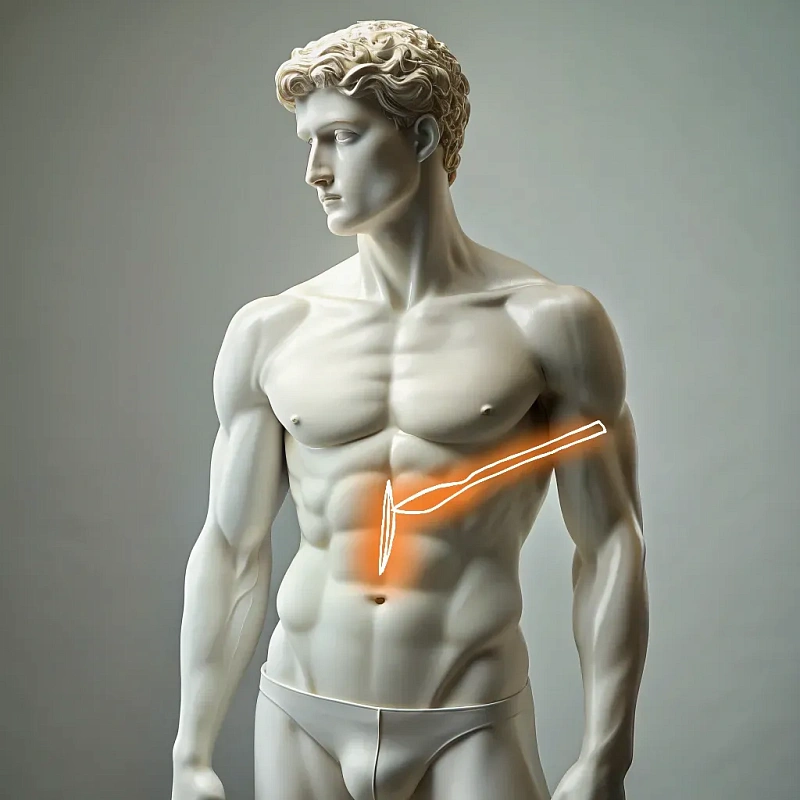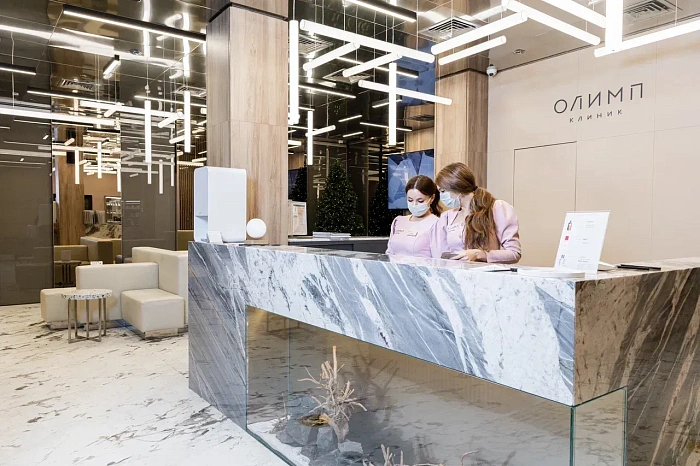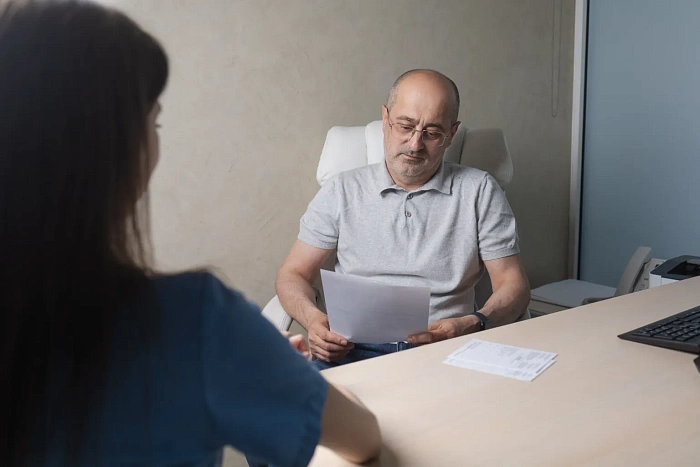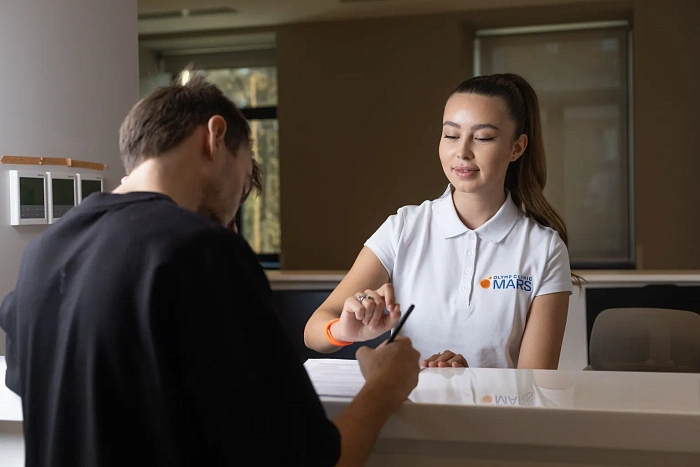Consultation with a surgeon
На приеме врач осматривает пациента, анализирует его жалобы и историю болезни. Это первый этап в диагностике и планировании лечения хирургических заболеваний.

На ранних этапах многие заболевания легче лечить, и именно хирург может определить, требуется ли операция или можно попробовать другие методы.
Consultation with a surgeon may be necessary for acute appendicitis, hernias, varicose veins, gallbladder diseases, tumors and injuries. It is worth making an appointment with a surgeon if you experience acute or chronic pain, swelling, neoplasms, bleeding and other pathological changes. The surgeon also advises patients on preparation for surgery, explains possible risks and complications, and develops an individual treatment and rehabilitation plan.
The consultation begins with a detailed interview of the patient about his complaints and medical history. The doctor performs a physical examination, may prescribe additional tests or instrumental examinations, such as ultrasound, MRI or X-ray, to confirm the diagnosis.
It is important to follow the doctor's recommendations, attend repeated consultations to monitor the condition and adjust treatment.
Before consulting a surgeon, it is recommended: Collect the results of previous studies and analyses. Prepare a list of medications and dietary supplements. Write down all the symptoms and their duration.
To consult a surgeon , the following instruments are used to conduct a physical examination. Ultrasound machines for the examination of organs and tissues. Computer tomographs (CT) and magnetic resonance imaging (MRI).
Benefits
Professionalism and experience
The opportunity to get the opinion of a highly qualified specialist on your disease.
Detailed information
Full understanding of all aspects of the upcoming surgery and recovery period.
Building trust
The opportunity to establish contact with the doctor who will perform the operation.
Individualization of treatment
Selection of a treatment strategy taking into account the patient's health characteristics.
Preparation
Before the consultation, it is recommended to collect all available medical documents, including the results of tests, examinations and information about previous operations and diseases.

Consultation with a surgeon
The doctor conducts an examination, examines medical documentation, discusses complaints, medical history with the patient and answers questions. If necessary, the surgeon prescribes laboratory and diagnostic tests. After receiving the results, the doctor makes a diagnosis and sets the date of the operation.

Recommendations
It is important to follow the doctor's recommendations, attend repeated consultations to monitor the condition and adjust treatment.

Specialists
Find a SpecialistIndications and contraindications
Indications
Suspected diseases requiring surgical intervention
For example, appendicitis, hernias, gallstone disease.
The need to assess the possibility of surgery
In the presence of chronic diseases or in cases where the question of the expediency of surgery is being decided.
Planning complex surgical procedures
For oncological diseases that require careful planning of the operation.
Consultation on recovery after surgery
For patients who need information about rehabilitation and further care.
Expected effect
Comprehensive assessment of the condition
The patient receives a professional assessment of his health and information about the need for surgical treatment.
Understanding the treatment plan
Discussion of all aspects of the upcoming surgery, including preparation, the procedure itself and the recovery period.
Reducing anxiety
Informing about all stages of the upcoming treatment helps to reduce stress in the patient.
Individual approach
Choosing the optimal treatment method based on the diagnosis and general health of the patient.
Similar referral activities
Consultation with a neurosurgeon
A medical examination aimed at diagnosing diseases and injuries of the nervous system, brain and spinal cord, peripheral nerves and vascular abnormalities requiring surgical intervention.
How to reach
How to get
From the Belorusskaya metro station of the Zamoskvoretskaya line - exit 4 After exiting the subway, walk through the pedestrian tunnel and climb the stairs. Move towards the railway tracks, go down the stairs immediately after them and walk along the house, then turn right onto 1st Yamskoye Pole Street. At the turn to 3rd Yamsky Pole Street, cross the road at the pedestrian crossing and continue along 1st Yamsky Field Street, after a few buildings on the left you will see Olympus Clinic MARS.
Travel time
9 minutes
Landmark
Olympus Clinic MARS sign
How to get
From the Belorusskaya metro station of the Ring line - exit 2. After exiting the subway, turn left and walk to the pedestrian crossing. Cross the road through two pedestrian crossings and move along the Tverskoy overpass. Go down the stairs immediately after the railway tracks, walk along the house, then turn right onto 1st Yamskoye Pole Street. At the turn to 3rd Yamsky Pole Street, cross the road at the pedestrian crossing and continue along 1st Yamsky Field Street, after a few buildings on the left you will see Olympus Clinic MARS
Travel time
11 minutes
Landmark
Olympus Clinic MARS sign
From the metro station "Tsvetnoy Bulvar"
1 exit to the city, then left to the Garden Ring, at the crossing to the right, crossing the boulevard, one more crossing and at the traffic light to the left. The Olymp Clinic building is located overlooking the Garden Ring to the right of the crossing. Travel time is approximately 9 minutes. Landmark - sign Olymp Clini
From the metro station "Sukharevskaya"
Exit 3 from the metro and 640 meters straight ahead, the clinic will be on the right. Landmark - sign Olymp Clinic
Parking lot map
Exit 3 from the metro and 640 meters straight ahead, the clinic will be on the right. Landmark - sign Olymp Clinic

From Sokol metro station
The last car from the center: follow the signs for Exit 5. From the glass doors to the right and go to the end of the passage. Exit to the city by the steps to the left. After exiting the crossing to the street, go straight along Leningradsky Prospekt to the intersection with Chapaevsky Lane. Next, turn right (onto Chapaevsky Lane) and walk to the Triumph Palace residential complex. Entrance to the territory: through checkpoint No. 1, opposite the Vkusville store, you will need to present your passport. After passing through the checkpoint, go up the stairs to the fountain, opposite it you will see our clinic.
Travel time
10-12 minutes
From the Airport metro station
The first car from the center: follow the Exit 2-3 signs. Turn left out of the glass doors and walk to the end of the passage. After exiting the crossing to the street, go straight along Leningradsky Prospekt to the intersection with Chapaevsky Lane. Next, turn left (onto Chapaevsky Lane) and walk to the Triumph Palace residential complex. Entrance to the territory: through checkpoint No. 1, opposite the Vkusville store, you will need to present your passport. After passing through the checkpoint, go up the stairs to the fountain, opposite it you will see our clinic.
Travel time
12-15 minutes
How to get
Entry to the territory is prohibited, but there are free city parking lots around the Triumph Palace residential complex, where you can easily find a place for your car. Free parking area:



